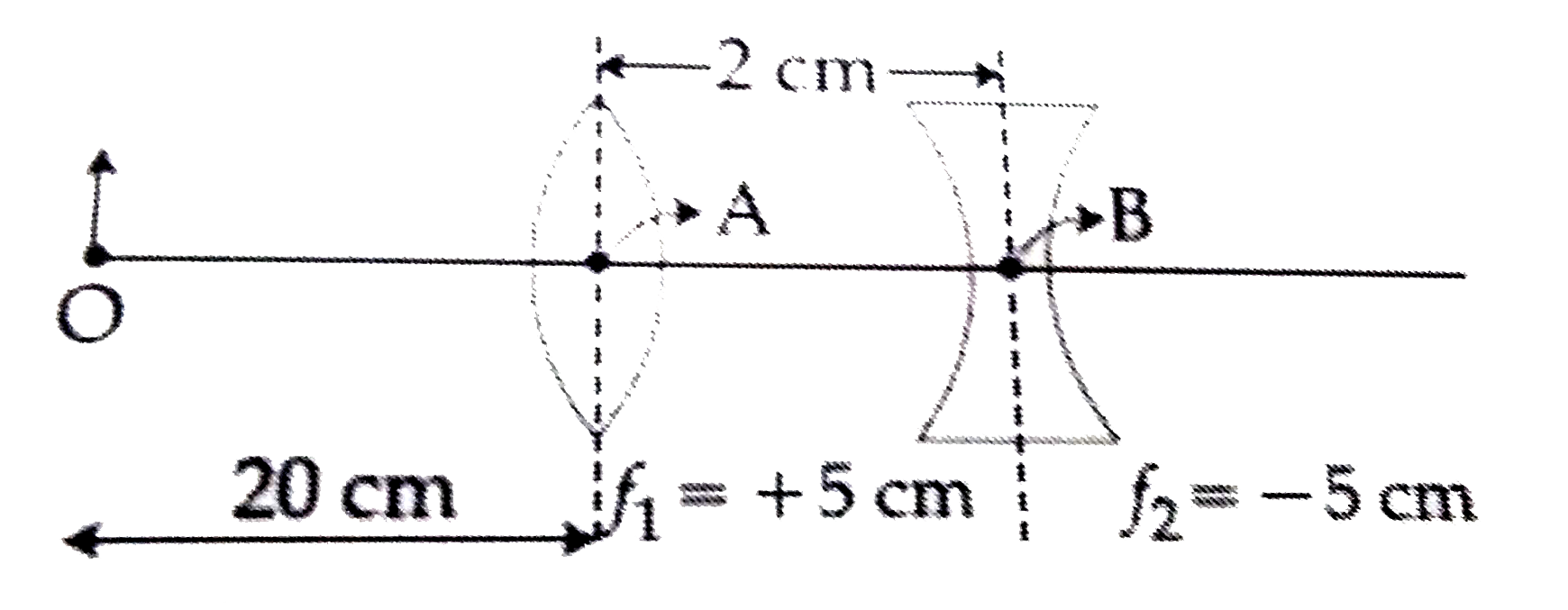A strong source of light when used with a convex lens produces a number of images of the source owing to feeble internal reflections and refraction called flare spots as shown in figure . These extra images are F1,F2. If Fn is the position of nth flare spot, then show that

Step by step video & image solution for A strong source of light when used with a convex lens produces a number of images of the source owing to feeble internal reflections and refraction called flare spots as shown in figure . These extra images are F_(1),F_(2). If F_(n) is the position of n^(th) flare spot, then show that by Physics experts to help you in doubts & scoring excellent marks in Class 12 exams.
Updated on:21/07/2023Topper's Solved these Questions
- GEOMETRICAL OPTICSBOOK - PHYSICS GALAXY - ASHISH ARORACHAPTER - GEOMETRICAL OPTICSEXERCISE - Practive Exercise 5.1
10 Videos
- GEOMETRICAL OPTICSBOOK - PHYSICS GALAXY - ASHISH ARORACHAPTER - GEOMETRICAL OPTICSEXERCISE - Practive Exercise 5.2
6 Videos
- ELECTROSTATICSBOOK - PHYSICS GALAXY - ASHISH ARORACHAPTER - ELECTROSTATICSEXERCISE - Unsolved Numberical Problems
73 Videos
- HEAT AND THERMAL EXPANSIONBOOK - PHYSICS GALAXY - ASHISH ARORACHAPTER - HEAT AND THERMAL EXPANSIONEXERCISE - UNSOLVED NUMRICAL PROBLEMS FOR PREPARATION OF NSEP, INPhO & IPhO
82 Videos
Similar Questions
Draw ray diagrams to represent the nature, position and relative size of the lens for the object placed:
a) at 2F1,
b) between F1 and the optical center O of the lens.
Which of the above two cases shows the use of convex lens as a magnifying glass? Give reasons for your choice.
View Solutionwhat is the position and nature of image formed by lens combination shown in figure ? (f1,f2 are focal lengths)

View Solution
Knowledge Check
A convex lens of focal length f produces a virtual image n times the size of the object. Then the distance of the object from the lens is
A(n−1)fB(n+1)fC(n−1n)fD(n+1n)fA convex lens of focal length f produces an image 1/n times the size of the object. The distance of the object from the lens is
A(n+1)fB(n−1)fCnfDfnA convex lens of focal length f produces an image 1/n times the size of the object. The distance of the object from the lens is
A(n+1)fB(n−1)fCnfDfn
A point source of light is located 20 cm in front of a convex mirror with f=15 cm. Determine the position and nature of the image point.
View SolutionA convex lens of focal length f produces an image 1n times than that of the size of the object. The distance of the object from the lens is:
View SolutionA thin film of a specific meterial can be used to decrease the intensity of reflected light. There is destrucive inteference of wave reflected from upper and lower surface of the film. These films are called non-reflecting or anti-reflecting coatings. The process of coating the lens or surface with non-reflecting film is called blooming as shown in figure The refracting index of coating (n1) is less than that of the glass (n2).

6. If the thickness of film in above question in not technologically possible to manufacture, then next thickness of film required is (approximately)
View SolutionA convex mirror of focal length f produces an image (1n)th of the size of the object. Then the distance of the object from the mirror is
View SolutionA convex mirror of focal length f produced an image (1/n)th of the size of the object. The distance of the object from the mirror is
View Solution
